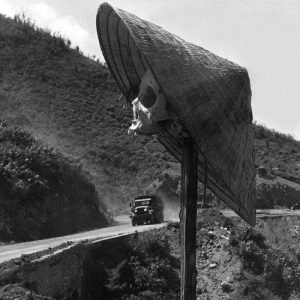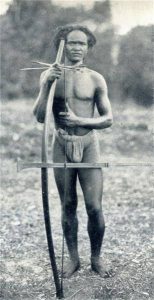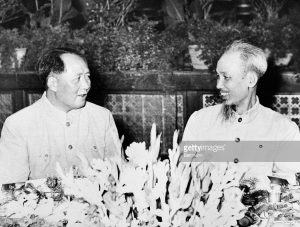If the tiger ever stands still, the elephant will crush him with his mighty tusks. But the tiger will not stand still. He will leap upon the back of the elephant, tearing huge chunks from his side, and then he will leap back into the dark jungle. And slowly the elephant will bleed to death. Such will be the war in Indochina. –Ho Chi Minh
Chinese military strategist and philosopher Sun Tzu has been credited with defining guerilla warfare in his writing “The Art of War”. Roman statesman and military strategist Quintas Fabius has been credited with first employing guerilla warfare technique during Rome’s wars with Hannibal. And later, many people in the provinces employed guerilla tactics in an attempt to thwart the mighty Roman war machine.
It is this author’s opinion, however, that guerilla type war has been waged ever since there were large groups of people battling small groups of people, going back to the time when twenty cave men attacked five. Any thinking people under attack from a larger group of people, might easily determine the best way to fight such an enemy, would be to launch small attacks at various points, and various times.
Guerilla warfare was also prevalent during medieval, colonial and communist bloc times, as larger nations/parties warred with smaller ones. In U.S. history, American revolutionaries employed guerilla tactics during their early wars with England, as well as in later wars with Mexico, and even during the American civil war. And guerilla tactics were most certainly employed in both world wars.
Vietnam Fights off the Chinese Dragon
Though at war through much of it’s history, Vietnam remains beautiful
Vietnam fought off many incursions by it’s large neighbor to the north. Though not always successful, Vietnam kept the Chinese at bay for many centuries, through the use of Guerilla tactics, guile and guts. The Trung sisters remain legendary for holding off the Chinese for many years.
Vietnamese Revolutionaries Ply their Trade Against France
Resistance to the French colonization of Vietnam in the late 1800’s started gathering momentum within a few years. By the early 1900’s resistance groups started applying pressure on their French overlords, via covert and overt operations. Despite their battles with the Chinese over the centuries, the Vietnamese at first looked for help from them in their fight against the French. The Chinese provided none.
Vietnamese resistance kept the French uncomfortable
* Starting in the 1890’s and continuing until France abandoned Vietnam completely
* Vietnam faced Japan, after Japan kicked the French out in WWII
* The French Sneak Back in 1945
* France thrown out for good in 1954
America Takes Their Turn
By the time the United States became involved, the Vietnamese had accumulated significant experience in guerilla warfare.
This article attempts to display many of the tools of the guerilla fighter in Vietnam. Though not all encompassing, the weaponry shown in this article served the Vietcong guerilla movement throughout it’s war with the United States.
VC sniper VC sappers often encroached military bases
Transportation was constantly targeted. The standard punji trap
Punji trap variations
The VC used the Montagnard Crossbow
Terror against South Vietnamese civilians was common
AK-47 rifles provided by USSR and China
Mao Zedong & Ho Chi Minh
122 rocket and launcher
VC tunnel complex. Many were far less sophisticated than this one.
The Vietcong, as well as the North Vietnamese moved many tons of material during the war, on bicycles, oxen and elephants
War demands sacrifice of the people. It gives only suffering in return. – Frederic Clemson Howe
***















I never heard it before but the Ho Chi Minh quote at the beginning of the article says it all. One might add that the tiger was restless, ruthless, relentless, creative, cunning, and persistent. Thanks for another good article Joe.
Thanks Bob. “Uncle Ho” was a very interesting individual.
Great explanation, Joe! Too bad the military brass and politicians didn’t have this article available in the early sixties. If only…
You know it, John!